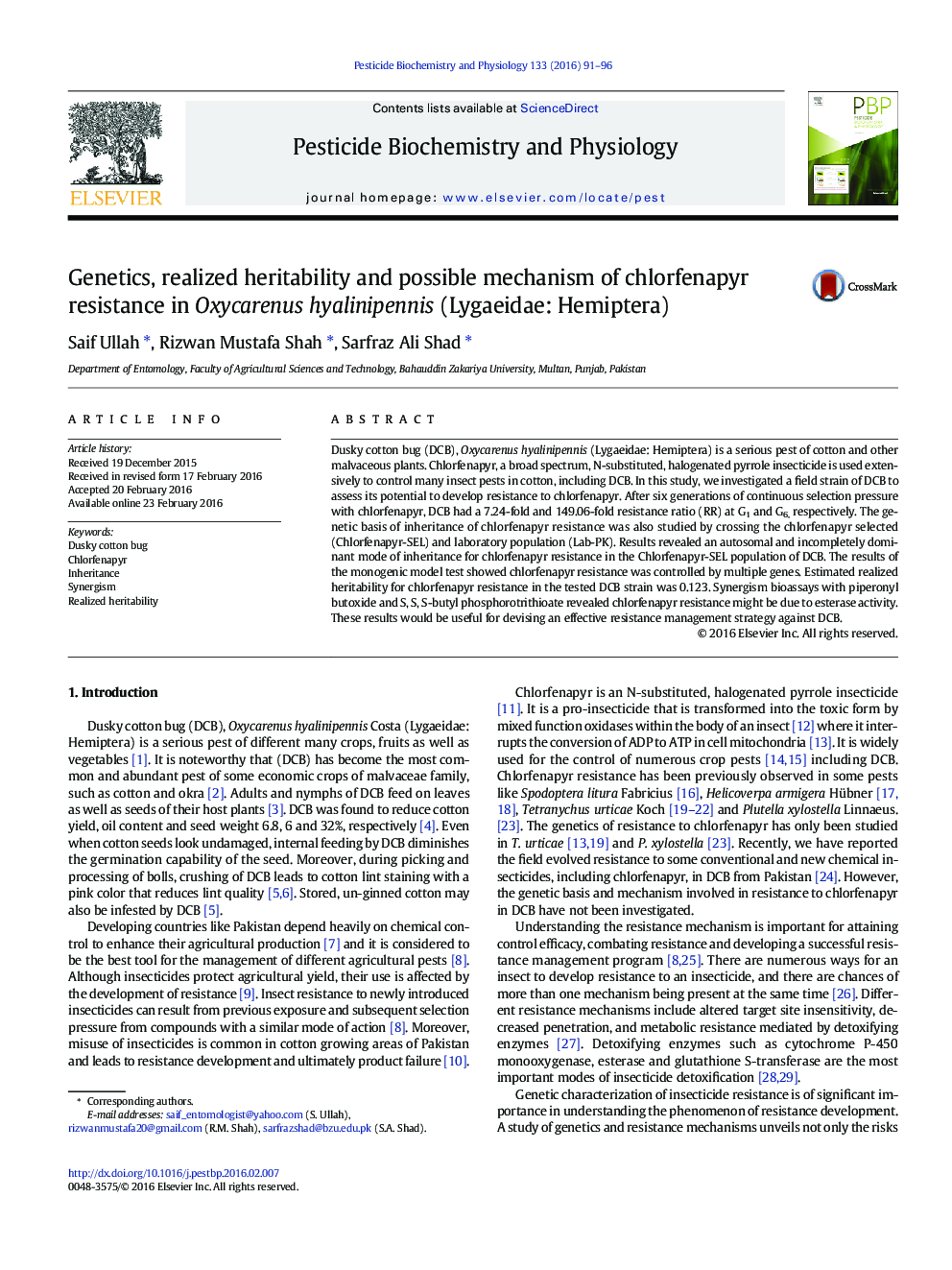| کد مقاله | کد نشریه | سال انتشار | مقاله انگلیسی | نسخه تمام متن |
|---|---|---|---|---|
| 5514914 | 1541766 | 2016 | 6 صفحه PDF | دانلود رایگان |

- After 6 generations of selection, a strain of O. hyalinipennis developed 149.06-fold resistance to chlorfenapyr.
- Reciprocal crosses of Lab-PK and Chlorfenapyr-SEL strains showed an autosomal trait of resistance to chlorfenapyr
- The incompletely dominant and polygenic resistance was found in Chlorfenapyr-SEL strain of O. hyalinipennis.
- Effective dominance expressed that resistance was completely recessive at the higher concentration but incompletely dominant at the lowest concentration.
- Synergism bioassays with Piperonyl butoxide and S,S,S-butyl phosphorotrithioate determined that chlorfenapyr resistance might be due to esterase activity.
Dusky cotton bug (DCB), Oxycarenus hyalinipennis (Lygaeidae: Hemiptera) is a serious pest of cotton and other malvaceous plants. Chlorfenapyr, a broad spectrum, N-substituted, halogenated pyrrole insecticide is used extensively to control many insect pests in cotton, including DCB. In this study, we investigated a field strain of DCB to assess its potential to develop resistance to chlorfenapyr. After six generations of continuous selection pressure with chlorfenapyr, DCB had a 7.24-fold and 149.06-fold resistance ratio (RR) at G1 and G6, respectively. The genetic basis of inheritance of chlorfenapyr resistance was also studied by crossing the chlorfenapyr selected (Chlorfenapyr-SEL) and laboratory population (Lab-PK). Results revealed an autosomal and incompletely dominant mode of inheritance for chlorfenapyr resistance in the Chlorfenapyr-SEL population of DCB. The results of the monogenic model test showed chlorfenapyr resistance was controlled by multiple genes. Estimated realized heritability for chlorfenapyr resistance in the tested DCB strain was 0.123. Synergism bioassays with piperonyl butoxide and S, S, S-butyl phosphorotrithioate revealed chlorfenapyr resistance might be due to esterase activity. These results would be useful for devising an effective resistance management strategy against DCB.
Journal: Pesticide Biochemistry and Physiology - Volume 133, October 2016, Pages 91-96